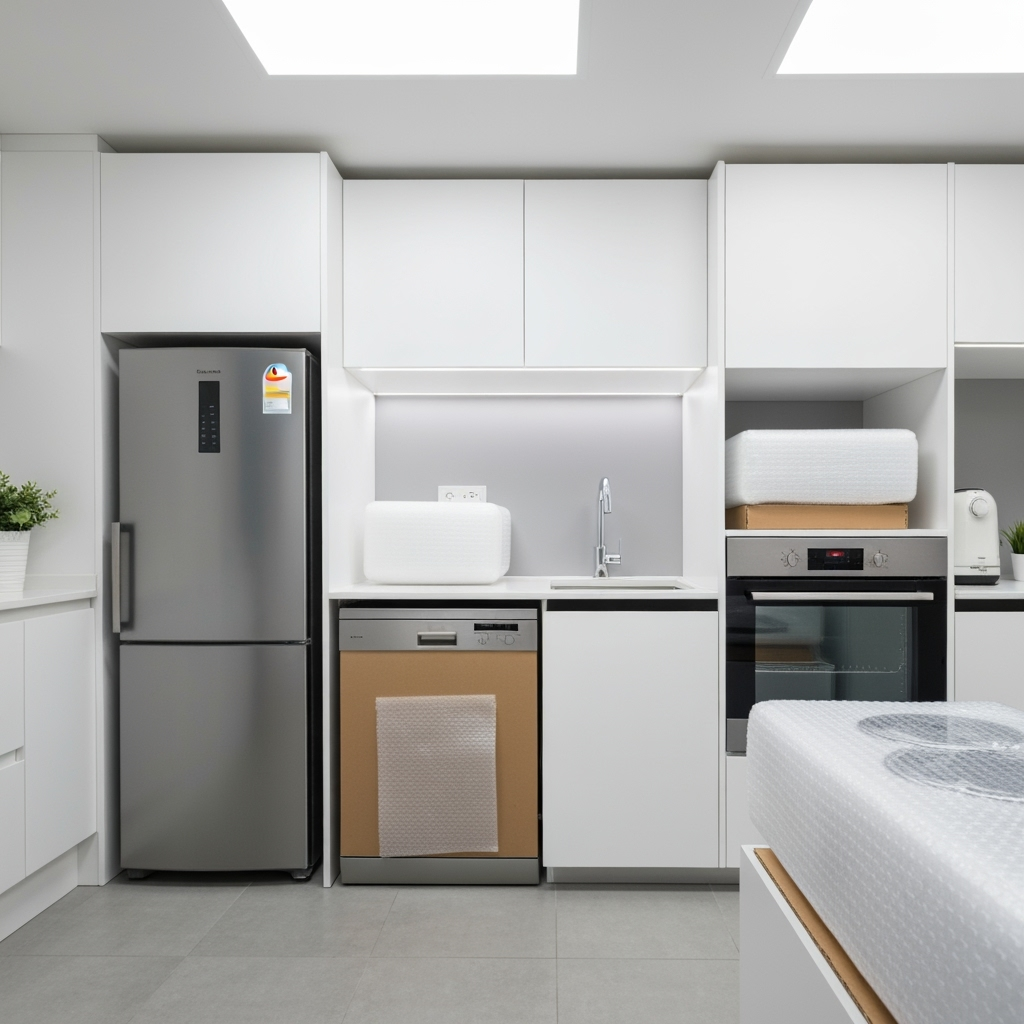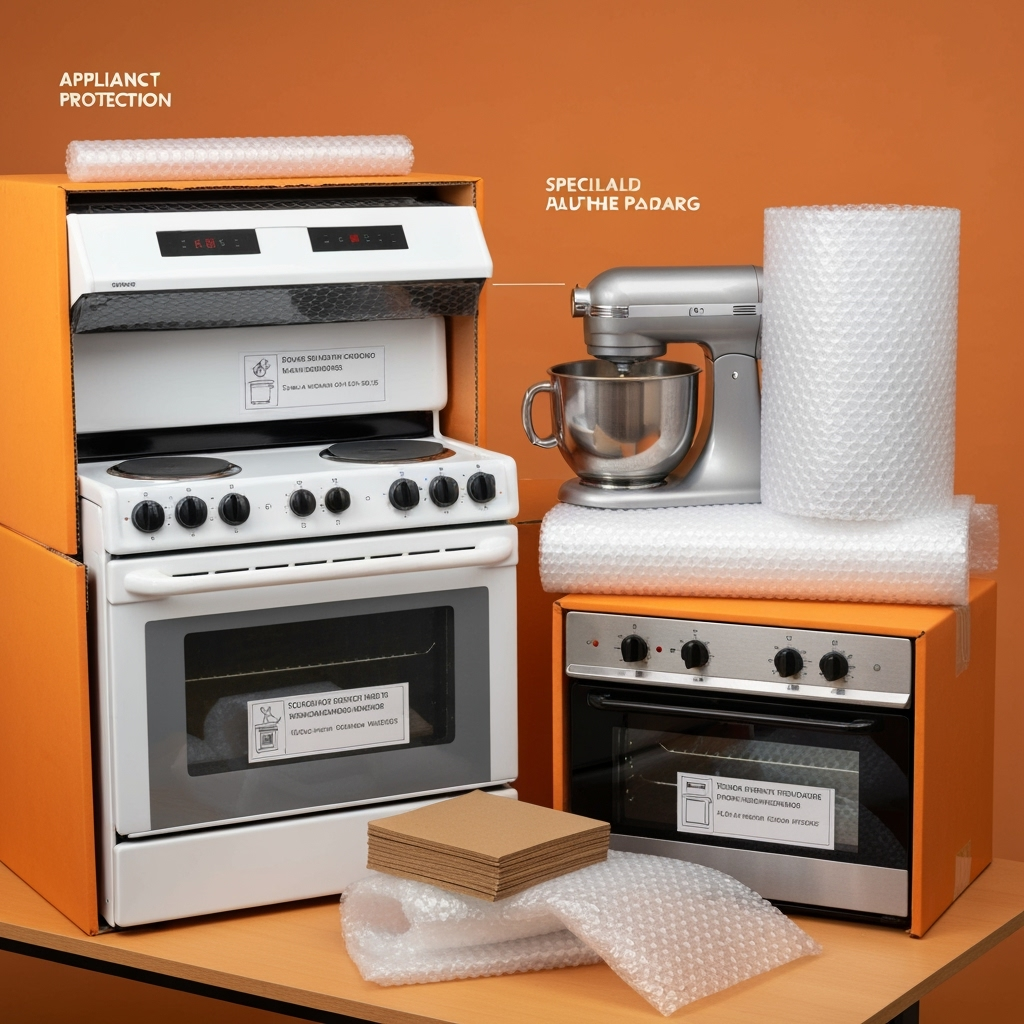Understanding the Challenge of Appliance Storage During Kitchen Renovations
Kitchen renovations are exciting but can pose significant challenges when it comes to protecting your valuable appliances. Whether you’re undertaking a complete kitchen remodel or a partial upgrade, proper storage of your appliances is crucial to maintaining their condition and value. This comprehensive guide will help you navigate the complexities of appliance storage during your renovation project.

Pre-Storage Preparation: Essential Steps
Before moving your appliances to storage, proper preparation is essential:
- Clean and dry all appliances thoroughly
- Remove or secure any removable parts
- Defrost refrigerators and freezers
- Disconnect and cap gas lines professionally
- Document existing connections for easier reinstallation
- Take photos of current setup and label all cables
Choosing the Right Storage Environment
Climate-controlled storage is essential for protecting your kitchen appliances. The ideal storage environment should:
- Maintain consistent temperature between 50-80°F
- Control humidity levels to prevent rust and mold
- Provide adequate ventilation
- Offer protection from dust and debris
- Include security features for valuable appliances

Proper Packing Techniques for Different Appliances
Refrigerators and Freezers
These require special attention due to their size and complexity:
- Keep upright during transport and storage
- Secure doors while allowing slight air circulation
- Use moisture-absorbing products inside
- Protect coils and mechanical components
Ovens and Ranges
Protect these heavy-duty appliances with care:
- Wrap heating elements separately
- Secure oven doors and knobs
- Use corner protectors
- Place on sturdy pallets
Dishwashers and Microwaves
These require careful handling to prevent damage:
- Drain completely and dry thoroughly
- Secure spray arms and racks
- Protect control panels and displays
- Use anti-static wrapping materials
Professional Storage Solutions vs. DIY Options
Consider these factors when choosing between professional storage and DIY solutions:
Professional Storage Benefits:
- Climate-controlled environment
- Professional handling equipment
- Enhanced security features
- Insurance coverage options
- Flexible access schedules
DIY Storage Considerations:
- Cost-effectiveness for short-term storage
- Immediate access when needed
- Personal oversight of conditions
- Potential space limitations
- Climate control challenges
Storage Duration Planning
Different storage durations require different approaches:
Short-Term (1-3 months):
- Basic climate control
- Essential protective wrapping
- Easily accessible arrangement
Medium-Term (3-6 months):
- Enhanced moisture protection
- Regular maintenance checks
- Thorough documentation
Long-Term (6+ months):
- Professional preparation
- Comprehensive climate control
- Scheduled maintenance plan
Essential Tips for Success
Follow these key tips to ensure successful appliance storage:
- Create a detailed inventory with photos
- Use quality packing materials
- Maintain proper spacing between items
- Keep important documentation accessible
- Plan for regular checks during storage
- Consider professional moving assistance
Post-Storage Considerations
Prepare for the return of your appliances:
- Schedule professional reinstallation
- Plan for acclimatization period
- Inspect thoroughly before use
- Test all functions carefully
- Keep warranty information handy
Making the Right Choice for Your Situation
Consider these factors when planning your appliance storage:
- Renovation timeline and potential delays
- Local climate conditions
- Budget constraints
- Appliance value and age
- Available storage options
- Insurance requirements
Conclusion
Proper storage of your kitchen appliances during renovation is crucial for protecting your investments. By following these guidelines and choosing the right storage solution for your needs, you can ensure your appliances remain in excellent condition throughout your renovation project. Remember that the extra effort in proper storage preparation can save significant costs in potential repairs or replacements down the line.










Leave a Reply